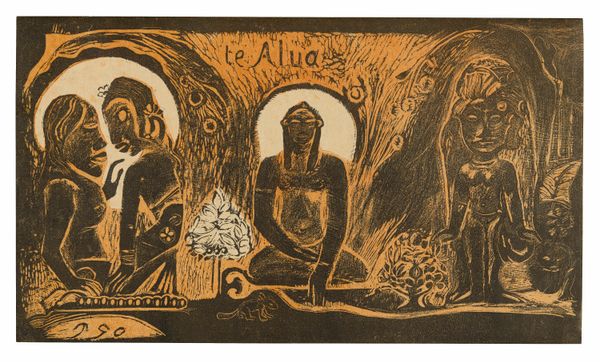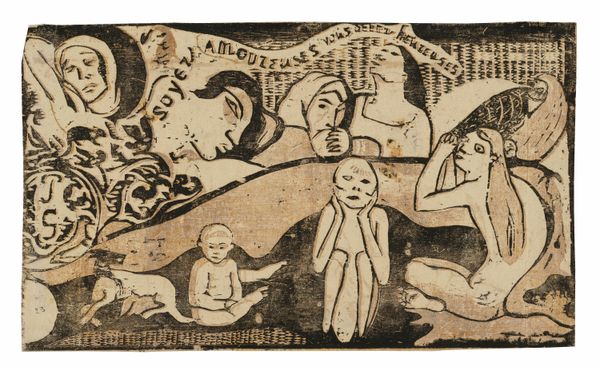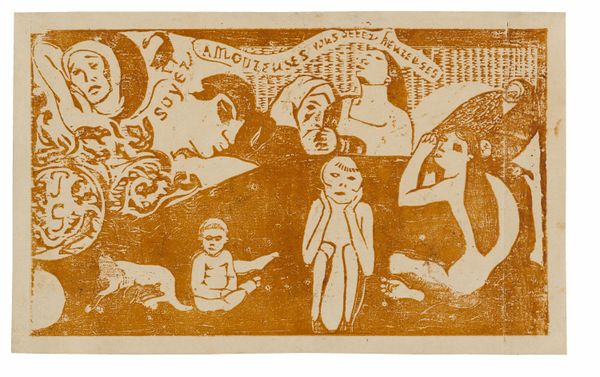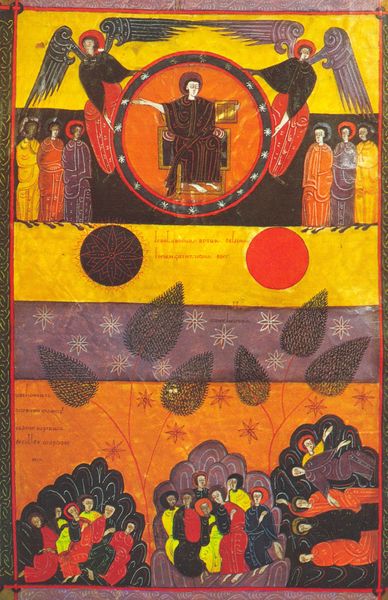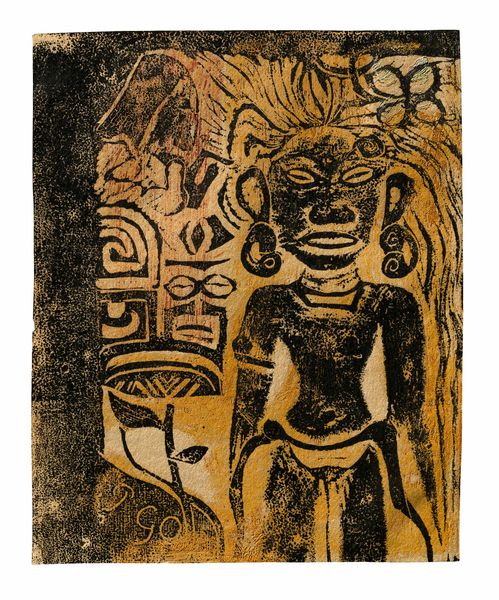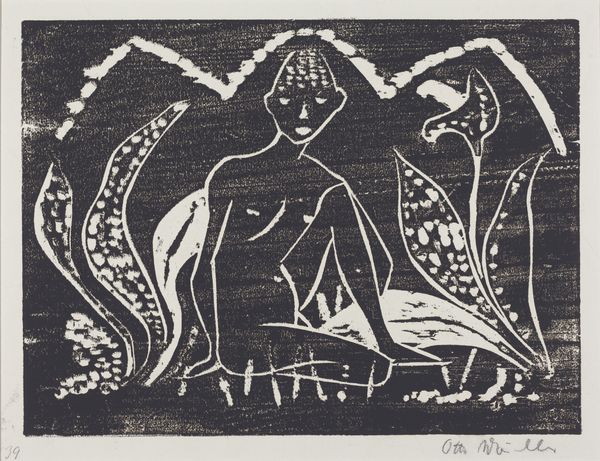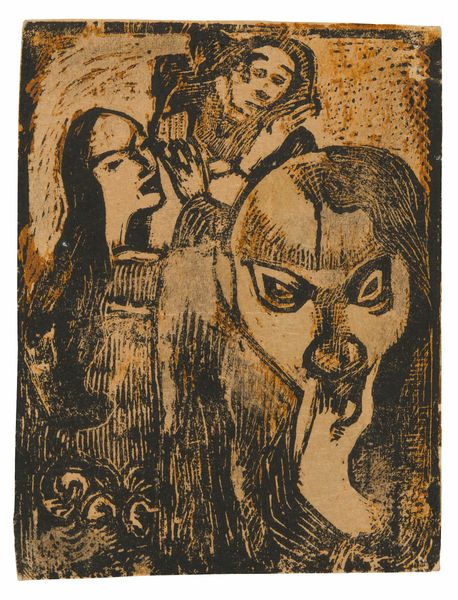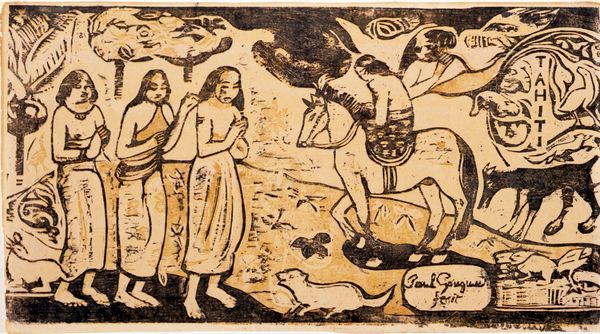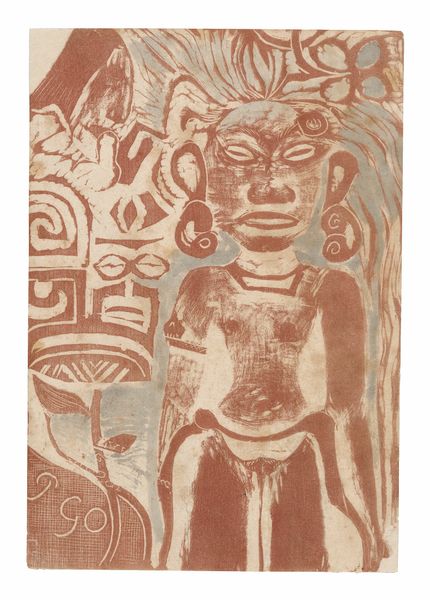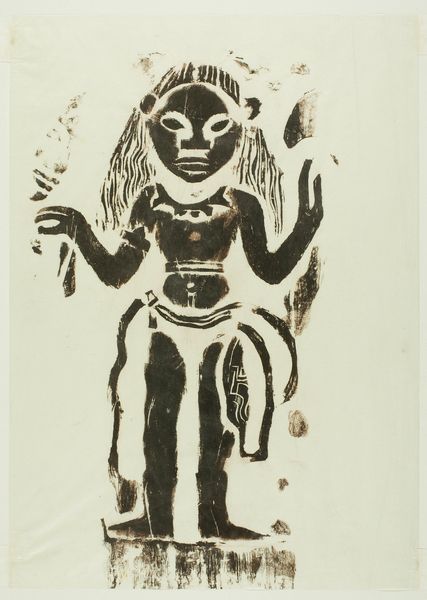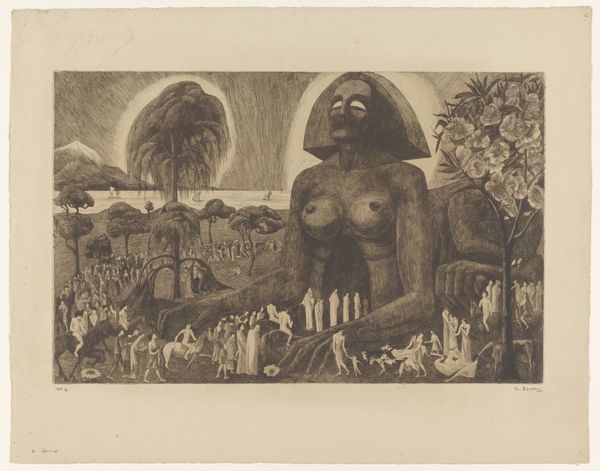
print, paper, woodcut
#
narrative-art
# print
#
figuration
#
paper
#
linocut print
#
woodcut
#
symbolism
#
post-impressionism
Dimensions: 204 × 355 mm (image); 207 × 357 mm (sheet)
Copyright: Public Domain
Editor: This is Paul Gauguin's "Te atua (The God), from the Noa Noa Suite," created between 1893 and 1894. It's a print, a woodcut I think, on paper, and looking at the composition and the color palette it evokes such a strong spiritual quality. What do you see in this piece from a formalist perspective? Curator: Observe how Gauguin employs line and form to construct meaning. The arrangement of figures into three distinct, haloed sections emphasizes a tripartite structure that governs the entire image. Editor: So, the figures are deliberately compartmentalized. How does that relate to the title "The God"? Curator: Exactly. And that monochromatic color scheme does not diminish from this. The print emphasizes stark tonal contrasts. We have light against shadow that draws the viewer's gaze to different focal points, but note also the varying texture achieved through the carving process. Does the visual arrangement invite certain interpretations, given the historical and artistic context of Gauguin's practice? Editor: I'm thinking about the concept of "primitivism," the art movement in this context is looking at so-called "primitive" societies to reimagine artistic styles in the western canon. The piece doesn’t quite sit right if you see it from the post-colonial point of view. The work also feels… simplified, abstracted, in a way that rejects academic tradition, but the effect romanticizes and flattens something very complicated. What is lost by stylistically "simplifying" a complex cultural system of indigenous peoples? Curator: Excellent question. Look closely how line and texture dictate spatial relationships within the artwork itself. This artistic interpretation is valid insofar as it informs a conversation concerning aesthetic expression within clearly established parameters of form, medium, and stylistic evolution. And by the stark forms does the arrangement create emotional effects beyond what the context may or may not inspire? Editor: It’s a perspective I had not fully considered! It’s easy to fixate on context alone and not see what is happening visually. Curator: Exactly, always attend to the way it looks and is structured, first and foremost.
Comments
No comments
Be the first to comment and join the conversation on the ultimate creative platform.
